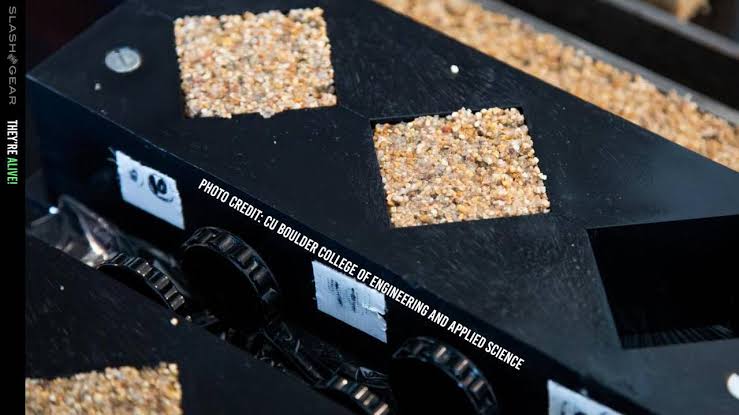
Living Bricks that could reproduce, self-heal and slurp CO2
Researchers have allegedly discovered a method with which they would be able to create living bricks that turn carbon dioxide into CaCO3, which is the main ingredient for cement. Studies with Synechococcus cyanobacteria showed great potential for future building projects when it is used in combination with sand, carbon dioxide, and a specific range of humidity conditions. Cutting the resulting bricks leads to self-healing and reproduction.
The process starts with inoculation of colonies of bacteria into a solution of gelatin and sand. The process takes in carbon dioxide and creates calcium carbonate, mineralizes the gelatin which, in turn, binds the sand. Assistant Professor, Department of Civil, Environmental and Architectural Engineering (CEAE) at University of Colorado Boulde, Wil Srubar said, “We use bacteria to help grow the bulk of the material needed for construction,”
Srubar further said, “We know bacteria grow at an exponential rate, so rather than manufacturing bricks one-by-one, you may be able to make one brick and have it split into two, then four, and so on. That would revolutionize not only what we think of a structural material, but also how we fabricate structural materials at an exponential scale.”
These bricks are as rough and tough as usually used in buildings for construction. These bricks however, can also reproduce – brick material making brick material. It’s similar to growing trees just to use their wood as building materials – but here the materials would be alive and helpful.
Kevin Paine, Structural Engineer, the BRE Centre in Innovative Construction Materials at the University of Bath, said, “This is always a problem when working with bacterial systems – The conditions that they need won’t stay ideal forever. They run out of food, oxygen or water and we need to give them that back.” Moreover, according to Paine, the best conditions for growth aren’t necessarily the best for structural integrity.
That was the reason that Srubar’s group chose to use cyanobacteria in their bricks as they are comparatively resilient to stress. Also, cost wise – they are inexpensive and are photosynthetic too.
